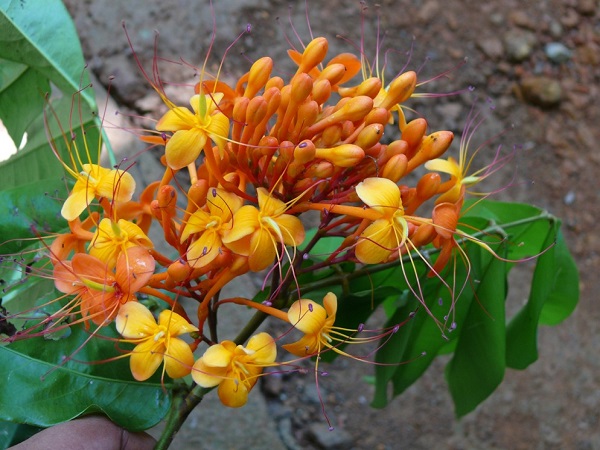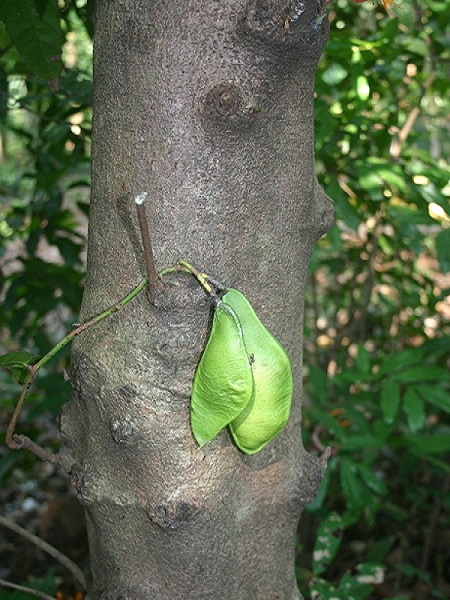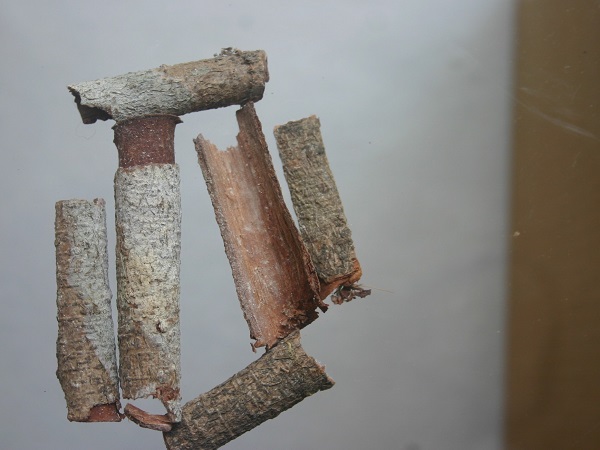
| Family | Fabaceae |
| English Name | Ashoka tree, Sita Asoka, Anganapriya |
| Malayalam Name | Asokam |
| Tamil Name | Asogam |
| Kannada Name | Ashokadamara, kenkelimara |
| Telugu Name | Ashokapatta |
| Hindi Name | Ashoka |
| Sanskrit Name | Kankeli |
| Trade Name | Ashoka tree, Sita Asoka, Anganapriya |
| Part Used | used to treat gynecological disorders. |
| In Wild | Yes |
| Under Cultivation | Yes |
| Temperature | 19 to 25 °C |
| Rainfall | 1500 to 4000 mm |
| Farmers | NA |
| Traders | NA |
| Institution | NA |
| Individually | NA |
| State/Region | NA |
| District | NA |
| Nursery Information | NA |
| Yield | NA |
| Economic of cultivation | Estimated cost of cultivation is about Rs 62,500 per hectare. Market price: Rs 100–170 per kg |
| Quantitative quality standards | Foreign matter: not more than 2% Ash: not more than 13% Acid insoluble ash: not more than 0.6% Ethanol soluble extraction: not less than 11% Water soluble extraction: not less than 10.5% |
| Description | NA |
| Agro technology/Cultivation practices | Planting-stock production: Propagules can be raised from seeds and stem cuttings. Seed propagation: Seeds are the most suitable propagation material. Mature seeds are collected from more than five- to six-year-old plants in December–January. The seedlings are raised in a nursery in March. The seeds are sown in mother beds or polybags of 25 cm × 20 cm size. The potting mixture consists of equal quantities of soil, sand, and FYM (farmyard manure). The seeds germinate in about 15 days. Approximately, 2 kg seeds are required for raising seedlings for planting in 1 hectare of land at a spacing of 3 m × 3 m. The seeds may be soaked in water for 12 hours before sowing, which improves the germination percentage. Vegetative propagation: Stem cutting The cutting of selected healthy branches brings out which are of 15 cm lengths having 4 to 5 nodes (with in thickness 0.5-1.5 cm). The basal portions of cuttings are dipped in the IBA (Indole-3-butyric acid), NAA (α-Naphthalene-acetic-acid) and IAA (Indole-3-acetic acid) respectively for four hours. After which the cutting was planted in the polypots filled with rooting media consists of sand, soil and farm yard manure (FYM) in the ratio of 1:2:1. The polypots were put under the agro-shed net and watered as per the requirement. Field planting: Two-month-old seedlings are transplanted in the pits during monsoon season in June/July. About 1100 seedlings per hectare are required for planting at a spacing of 3 m × 3 m for a pure crop. When intercropped with plantation crops like coconut, only about 200–250 seedlings may be planted per hectare, alternating with coconut rows. When intercropped with herbs, it may be planted at a spacing of 3 m × 6 m, requiring approximately 550 plants per hectare. Manuring/Fertilization: FYM (farmyard manure) at the rate of 10 kg/tree/year is applied twice: first in May–June while filling the pits and again in October–November at the time of second weeding. Irrigation: Asoka is a rainfed crop. During non-rainy months the seedlings may require irrigation. Pest and diseases: No serious pest or disease is reported in this crop. |
| Harversting | Harvesting & Post-harvest processing The plant flowers profusely at six to eight years of age and produces fruits during July to October. The tree survives for about 50 years. It is often felled after 20 years age for collecting bark. It is cut at a height of 15 cm from the ground level. If sufficient irrigation and fertilizers are provided, the stumps will regenerate new coppice shoots. Alternatively, the bark can be collected without cutting down the tree. The bark is peeled off in vertical strips with 6 cm interspaces between each strip. The peeled off area is renewed with fresh bark in one to two years. This nondestructive method is recommended for harvesting. The bark is dried in the shade, packed, and stored in containers. |
| Processing | NA |
| References | NA |


